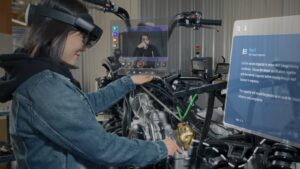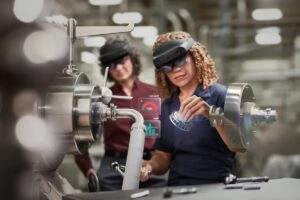
Product: Dynamics 365 Guides


2024 release wave 1 plans for Microsoft Dynamics 365 and Power Platform now available
On January 25, 2024, we published the 2024 release wave 1 plans for Microsoft Dynamics 365 and Microsoft Power Platform, a compilation of new capabilities planned to be released between April 2024 and September 2024. This first release wave of the year offers hundreds of new features and improvements.
Introducing new Copilot experiences to boost productivity and elevate customer experiences across the organization
Microsoft Copilot presents an opportunity to reimagine the way we work—turning natural language into the most powerful productivity tool on the planet. With AI, organizations can unearth value in the mountain of data across productivity tools like Microsoft 365 and business applications.
Enable faster, more impactful frontline services with Microsoft Dynamics 365 Field Service
With Microsoft Dynamics 365 Field Service, organizations with service technicians on the frontlines can help maximize productivity with AI-driven assistance and remote expert support in the flow of work.3 ways mixed reality empowers frontline workers
By integrating the physical and digital worlds, mixed reality brings a modern approach to role-based training, support and service, as well as knowledge transfer. Microsoft Dynamics 365 Guides cultivates collaborative environments where people put knowledge into action.
Introducing Copilot in Dynamics 365 Field Service, helping your frontline deliver exceptional service with next-generation AI
Delivering exceptional service is key for building customer preference and loyalty. But timely resolution can get challenging when fragmented tools make it hard to find the right information and service delivery gets delayed with lengthy data-entry processes.
Holographic Microsoft Teams features empower hybrid collaboration in the industrial metaverse
Microsoft HoloLens 2 customers are using mixed reality to expedite the ways they ensure process compliance, improve efficiency, and learn on the job with step-by-step holographic instructions in Microsoft Dynamics 365 Guides.
How Dynamics 365 Mixed Reality on HoloLens 2 is accelerating ROI for the healthcare industry
Healthcare providers around the world are accelerating their digital journey and embracing secure solutions that empower health team collaboration and boost clinician productivity.
Watch how to improve on-the-job guidance with mixed reality
Traditional guidance or upskilling usually requires a trained trainer, a trainee, some mix of resources like work instructions, parts manuals, or checklists, and a real-world or simulated task to perform. In this scenario, a skilled worker (the trained trainer) guides the trainee through the job until they have mastered the process and can work alone.
Manufacturers are mitigating disruptions with HoloLens 2 and Dynamics 365 mixed reality solutions
The challenges of the past few years have highlighted that no business is immune to sudden changes. Embracing mixed reality as a strategic initiative is key to ensuring business continuity and solidifying future stability and resiliency.
Microsoft HoloLens 2 and mixed reality bridge physical reality and digital experiences
Across industries, companies are finding practical ways to bridge physical reality and digital experiences using hands-free headsets and augmented reality solutions to inform decisions and action on insights produced by smart, connected solutions.
